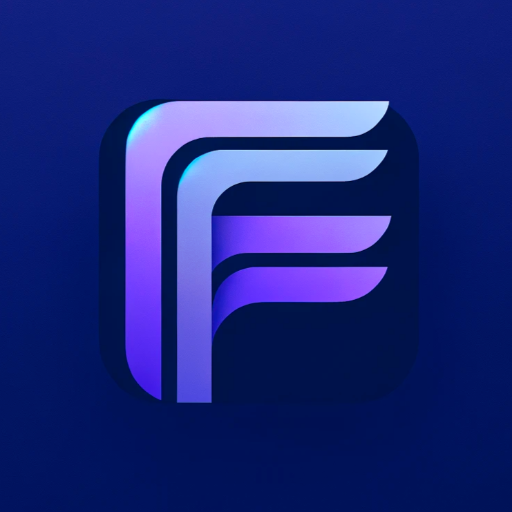Flutter riverpod-AI-Powered Flutter Support
Enhance your Flutter apps with AI.
How do I use Riverpod 2+ in my Flutter app?
What's the best way to implement Isar 3+ for sqlite in Flutter?
Can you show me an optimized ConsumerWidget example?
How do I troubleshoot a Flutter app using Dart 3+?
Show an example of "Clean Architecture"
Related Tools
Load More
Flutter Pro
Personal Flutter/Dart code developer.

Flutter Expert
Expert in Flutter and Dart, providing solutions and best practices.

Flutter Pro
Development Co-Pilot.

FlutterFlow Copilot
Your FlutterFlow Ally: Streamlining App Development with Expert Guidance and Interactive Solutions

FlutterFlow Sensei
Flutter flow pro guide that also supports code generation

Flutter Pro
Expert Flutter/Dart guidance with concise, clear advice on best practices. V1.1 05-20-2024
20.0 / 5 (200 votes)
Introduction to Flutter Riverpod
Riverpod is a state management library for Flutter that is designed to be more robust, testable, and scalable compared to other solutions like Provider. Developed by the same author as Provider, Riverpod aims to address some of the limitations and complexities that arise with traditional state management approaches. Riverpod is entirely based on immutable state management and offers features like compile-time safety, enhanced testing capabilities, and a modular approach to managing state. One of its core design principles is to decouple business logic from the UI, ensuring a clean architecture and easier maintenance of codebases.

Main Functions of Flutter Riverpod
State Management
Example
Using `StateNotifier` to manage and expose state changes.
Scenario
In a shopping cart application, `StateNotifier` can be used to manage the list of items in the cart. By exposing this state to the UI, the application can reactively update the cart's contents whenever an item is added or removed.
Dependency Injection
Example
Utilizing `ProviderScope` to manage dependencies.
Scenario
In a complex application, `ProviderScope` can be used to manage instances of services like authentication and API clients. This ensures that these services are easily accessible throughout the application and can be replaced or mocked during testing.
Asynchronous State Management
Example
Using `AsyncNotifierProvider` for handling asynchronous operations.
Scenario
In a weather application, `AsyncNotifierProvider` can manage the state of weather data fetched from an API. It can handle loading, success, and error states, providing a seamless user experience even when dealing with asynchronous data fetching.
Ideal Users of Flutter Riverpod
Flutter Developers
Flutter developers who are looking for a robust and scalable state management solution will benefit greatly from Riverpod. It provides a more structured approach compared to Provider, making it suitable for large-scale applications where maintaining clean architecture is crucial.
Mobile App Teams
Teams working on mobile applications that require high testability and modularity will find Riverpod invaluable. Its compile-time safety features and enhanced testing capabilities allow teams to build reliable and maintainable codebases, improving overall productivity and code quality.

How to Use Flutter Riverpod
1
Visit aichatonline.org for a free trial without login, also no need for ChatGPT Plus.
2
Ensure you have Flutter and Dart installed on your system. You can install Flutter from flutter.dev and follow the installation guide.
3
Add the Riverpod package to your pubspec.yaml file: dependencies: flutter_riverpod: ^2.0.0.
4
Create providers using Riverpod’s syntax. For example, use the Provider, StateNotifierProvider, or FutureProvider to manage state and logic.
5
Use ConsumerWidget or Consumer to listen to providers in your widgets. This allows your UI to react to changes in the state provided by Riverpod.
Try other advanced and practical GPTs
Serge TSH
AI-Powered Insights and Solutions.

Inbound Marketing Plan Builder
AI-Powered Inbound Marketing Strategies

Aiutante risposte messaggi call center
AI-powered messaging assistant for call centers

English assistant
AI-powered English text enhancement

Glide App Builder Assistant
Empower Your Ideas with AI.

SumText
Transforming Text with AI Precision.
Freelance Proposal Assistant
AI-powered Proposals for Freelancers

STEM.AI
AI-Powered Solutions for STEM Challenges

Kontrola pravopisu
AI-Powered Czech Grammar Check

Scanpy, Your Single Cell RNA-seq Data Analyst
AI-powered insights for single-cell RNA-seq

Visio Wizard
AI-powered automation and error resolution for Visio and VBA.

Python & Gurobi Master
Optimize with AI-driven solutions.

- Performance Optimization
- State Management
- Dependency Injection
- Asynchronous Data
- UI Updates
Five Detailed Q&A About Flutter Riverpod
What is Flutter Riverpod?
Flutter Riverpod is a state management library for Flutter applications. It provides a simple and scalable way to manage state and handle dependencies in your Flutter apps.
How does Riverpod differ from Provider?
Riverpod improves on Provider by offering better compile-time safety, avoiding common issues like context misuse, and supporting more advanced features like combining providers and automatic dependency updates.
Can Riverpod be used with other state management solutions?
Yes, Riverpod can be used alongside other state management solutions, though it is designed to be a complete replacement for them. It integrates well with other libraries, allowing you to migrate or combine approaches as needed.
How do you handle asynchronous operations in Riverpod?
Riverpod handles asynchronous operations using AsyncNotifierProvider and FutureProvider. These providers manage states that are dependent on asynchronous data, automatically updating the UI when the data changes.
What are some best practices for using Riverpod?
Some best practices include organizing providers in a modular way, using ConsumerWidget for better performance, leveraging code generation for large projects, and using Riverpod's built-in testing utilities to ensure robust state management.